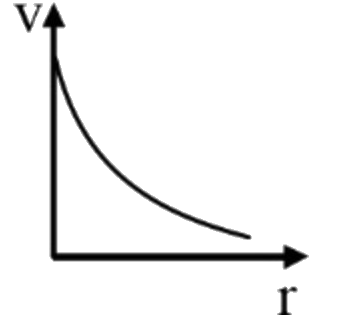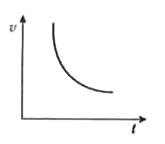The nature of graph between terminal velocity of spherical body vs the square of its radius is
expoentially increasin curve
staight line
parabola
exponentially decreasing curve
The correct Answer is:B
Step by step video, text & image solution for The nature of graph between terminal velocity of spherical body vs the square of its radius is by Physics experts to help you in doubts & scoring excellent marks in Class 11 exams.
Updated on:21/07/2023Topper's Solved these Questions
- FRICTION IS SOLIDS AND LIQUIDS BOOK - TARGET PUBLICATIONCHAPTER - FRICTION IS SOLIDS AND LIQUIDS EXERCISE - MCQ (COMPETITIVE THINKING)
97 Videos
- FORCE BOOK - TARGET PUBLICATIONCHAPTER - FORCE EXERCISE - Evaluation Test
16 Videos
- MAGNETIC EFFECT OF ELECTRIC CURRENT BOOK - TARGET PUBLICATIONCHAPTER - MAGNETIC EFFECT OF ELECTRIC CURRENT EXERCISE - Evaluation Test
12 Videos
Similar Questions
Knowledge Check
Terminal velocity (V) of a spherical object varies with a radius of object (r) -
A B
B C
C D
D
A particle is exdecuting a linear SHM. What is the nature of the graph between the velocity and displacement of the particle at any ins"tan"t ?
Aa straight lineBa circleCan ellipseDa parabolaWhich of the following is the graph between the time and the velocity of a body moving in a viscous fluid?
A B
B C
C D
D
A small spherical ball falling through a viscous medium of negligible density has terminal velocity v. Another ball of the same mass but of radius twice that of the earlier falling through the same viscous medium will have terminal velocity
View SolutionHow terminal velocity depends on the radius of the falling body?
View SolutionFor a body of given mass graph between velocity of the body and its linear momentum is
View SolutionA graph between the square of the velocity of a particle and the distance(s) moved is shown in figure. The acceleration of the particle in kilometers per hour square is:-

View SolutionA graph between the square of the velocity of a particle and the distance(s) moved is shown in figure. The constant acceleration of the particle in kilometer per hour square is:

View Solution
